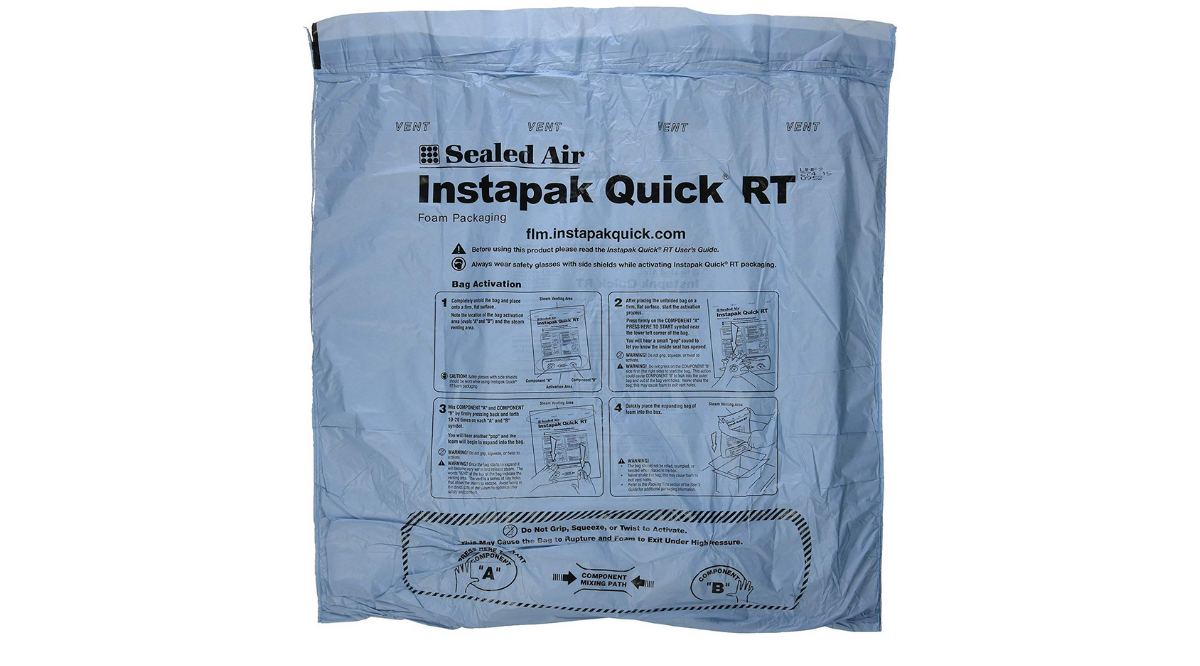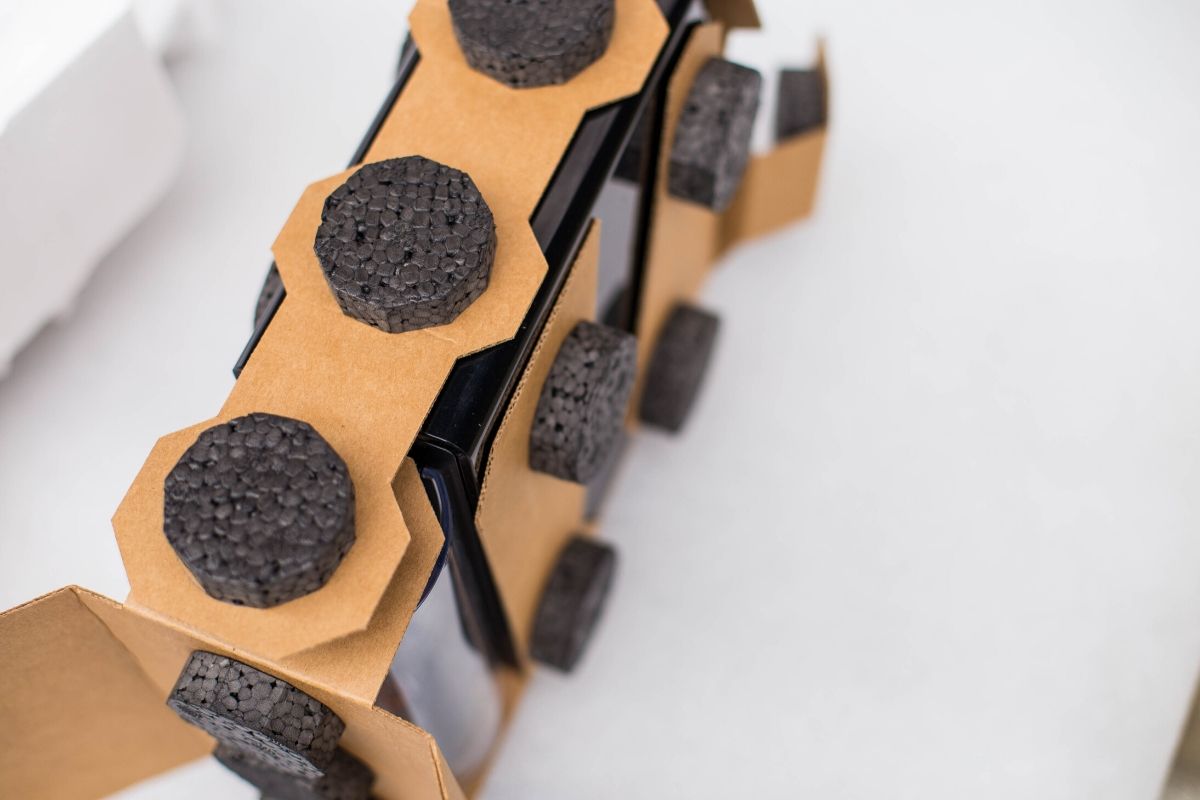A sustainable alternative to foam in place packaging
Highlighting the flaws of foam in place packaging, like Instapak®, and presenting a more sustainable approach
What is “foam in place” packaging?
A sustainable alternative to foam in place packaging – Foam-in-place, or “on-demand”, packaging solutions like Instapak, involve a plastic bag containing a mixture of liquids. The chemicals react to create a rapidly expanding polyurethane foam that grows to fit the size of the box, surrounding the product in cushioning foam. A common example, Instapak, uses polymeric diphenylmethane diisocyanate to produce the expanding polyurethane material. In general, these packaging methodologies are meant to encase a product within its box and provide a convenient solution for consumers.
What are the problems with foam in place packaging?
While Instapak represents a quick solution to product packaging, it presents a number of consumer safety concerns in addition to flaws in product protection and major issues for our environment. Instapak’s Safety Data Sheet clearly illustrates the underlying dangers of the product, presenting alarming precautionary fine print warnings.

Instapak’s chemical components are “harmful if inhaled” and are known to cause skin, eye and respiratory irritation. The product’s hazard identification defines the material as a Category 1 (“Highest Severity”) substance in regards to respiratory and skin sensitization. Although it poses as an easy-to-use, at-home packaging solution, it’s precautionary statements expose it as a potential health threat.
How well does foam in place protect your products?
Foam in place solutions wrap parts in as much foam material as possible, but unfortunately, that does not equate to better performance. Instapak, for example, can be crushed, broken, and rendered useless after one impact. This reduces the effectiveness and protective performance of the packaging solution, despite the product being visibly encased in inches of foam.
Is foam in place packaging sustainable?
Foam in place packaging is unsustainable for a variety of reasons. Polyurethane foam is not reusable nor recycled as a packaging material. PU foam material is rejected by recycling centers across the United States as a class seven (7) material. Further, the incineration of polyurethane releases toxic smoke into the atmosphere in addition to carbon dioxide.
Additionally, the strategy of foam in place packaging fails to properly address the challenge of creating sustainable solutions. The core idea with Instapak is to make it easy for consumers and companies to quickly package products – but the hazardous chemicals and post-consumer life cycle make it a serious problem to our environment.
Instapak grows to fill the shipping carton, resulting in excessive foam and higher dimensional weight than necessary. Excess material and non-recycled PU foam contribute to waste pollution – filling up landfills and contaminating water sources.
What is a more sustainable alternative to foam in place packaging?
The more sustainable alternative to foam in place packaging involves optimizing designs to use the exact amount of material required for product protection. By reducing material usage and switching to 100% recyclable materials, optimized solutions decrease the volumetric size of each package and substantially reduce their environmental impact.
Filling void space with non-recyclable materials or overpackaging boxes is not the answer. At EPE we create custom designs based on the product weight and fragility, allowing for a significant reduction in overall material and a lower-dimensional weight for each package – saving companies massively in freight costs.
Further, EPE USA solutions replace unsustainable polyurethane with 100% curbside recyclable materials, which are also capable of being reused in a sustainable closed-loop system. Switching from single-impact cushioning material to higher performing, multi-impact materials also improve product protection, lowering shipping damage while cutting transit costs simultaneously.

By making the switch to sustainable packaging designs, companies have the chance to dramatically reduce their environmental footprint and have a positive impact on our world.
Talk to one of our packaging experts today about our sustainable alternatives to foam in place packaging.